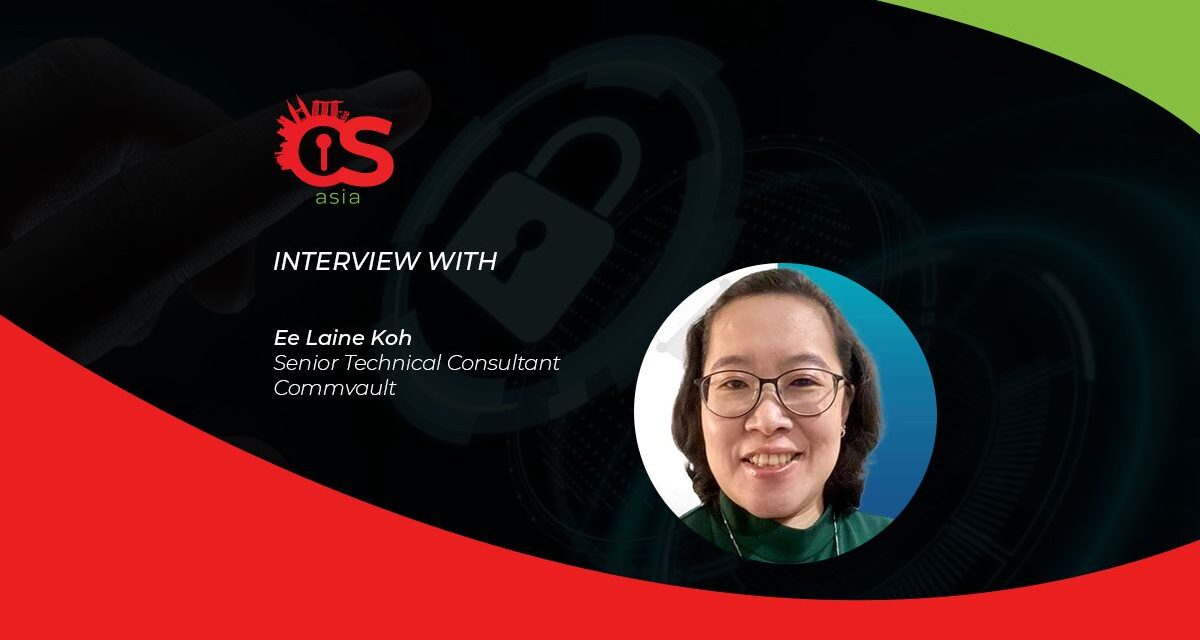This is a common pitfall for firms rushed into digitalization and cloudification: find out the unvarnished truths about cloud security here…
Amid either rushed, reluctant or accelerated digital transformation, many organizations large and small have moved more or most of their data to the Cloud.
Against the backdrop of the COVID-19 pandemic and massive shifts to remote-working, global corporate attack surfaces have expanded along with increased exposure to cloud-associated cybersecurity and data privacy/protection risks.
Clearly, digitalization does not end at migrating the corporate network to the cloud and assuming the old ways of maintaining cybersecurity will continue to work well. To remind organizations of the different new mindsets needed to remain cyber safe after digitalization and cloudification, CybersecAsia.net interviewed Ee Laine Koh, Senior Technical Consultant, Commvault for insights on cloud-centric cyber vigilance.
CybersecAsia: What are some practices that newly-digitalized firms need to focus on, to enjoy the best benefits of cloud computing while maintaining high levels of cybersecurity and data privacy/protection?

Ee Laine Koh (KEL): Importantly, organizations must be cloud-ready against risks regardless of their chosen infrastructure.
A complete cloud strategy should include cloud data management and data protection for coordination and collaboration. One of the most challenging issues for data storage is data security. A common mistake in the past two years that many enterprises made when moving their data into the cloud has been: not properly classifying data before the move to the cloud, or not setting up proper processes in the migration. Often, many firms inadvertently replicate old on-premises issues straight onto the cloud platforms.
For data to be optimized safely and securely in the cloud, it is important for IT teams to understand the data that is being migrated: what the data is and what it contains will affect how it is classified and secured on the cloud. Sensitive, privacy-compliant data requires a higher level of security. It is therefore essential for organizations to have a holistic view of their data while adhering to data governance policies.
CybersecAsia: Can you summarize how zero trust security can effectively safeguard a firm’s network after migrating data to the cloud?
KEL: Zero trust security continuously challenges and limits the ability of malicious actors to move and operate effectively. This is achieved via least privilege access, micro-segmentation, and multi-factor authentication (MFA).
- Least privilege access: This provides legitimate, verified users with the minimum level of network access to do their job. This minimizes exposure should their login credentials get compromised.
- Micro-segmentation: This zero trust principle separates the network both logically and physically into micro-segments to restrict and control access. Leveraging micro-segmentation helps create micro-containment zones to minimize the lateral movement of threat vectors.
- MFA: Some methods involved include Authentication, Authorization, and Accounting (AAA) that make it highly unlikely for a valid user account to be impersonated.
CybersecAsia: How can newly-digitalized and cloud-first organizations take note of to keep one step ahead of cyber threats?
KEL: They need to adopt a next-gen data management approach that incorporates zero trust principles. AI- and ML- powered threat detection and modern data protection constitute one avenue of helping defenders to pre-empt cyber threats as they can analyze and raise alert about anomalies intelligently. To ensure that organizations are always ready to defend their critical business data against attacks:
- Their first step should be a multi-layered plan. Prioritize a cyber-strategy that is resilient, flexible and contains:
- consistent recovery processes
- cross-cloud and cross-hypervisors recovery capabilities
- ample recovery options for data and workloads
- Next, organizations’ data security plans must be constantly updated and tested to manage cyber threat risks.
Lastly, these digital organizations must actively monitor for hidden threats. Sophisticated ransomware files can lie in wait until triggered, by which time the damage is already done. The key is in catching these files while they are still in hiding, through actively monitoring for early warnings of suspicious and malicious activities.
CybersecAsia thanks Ee Laine for her cyber insights.





















